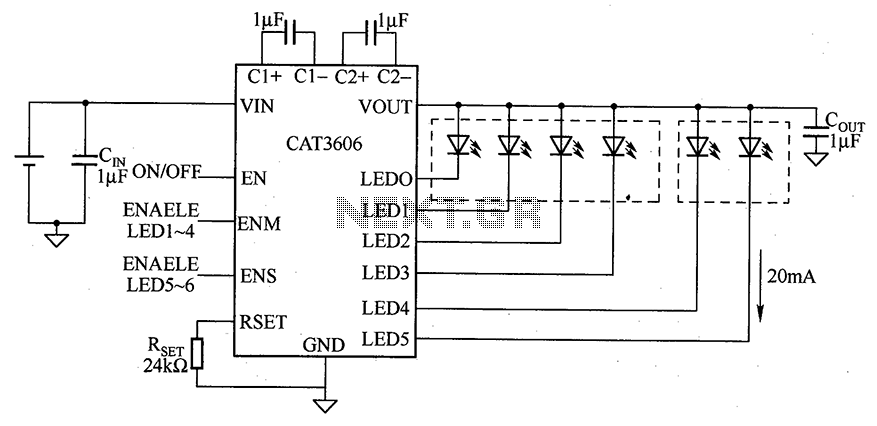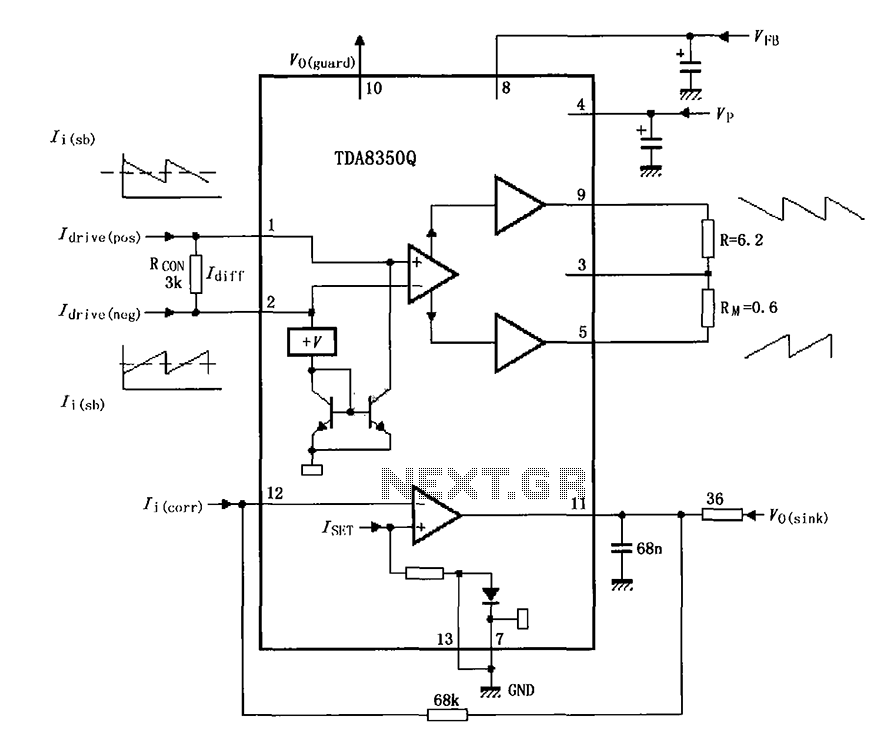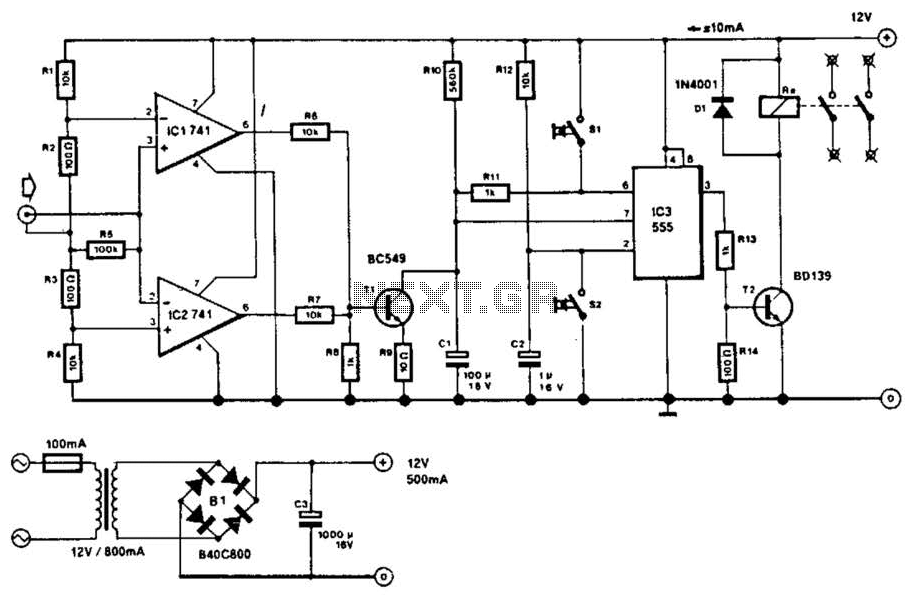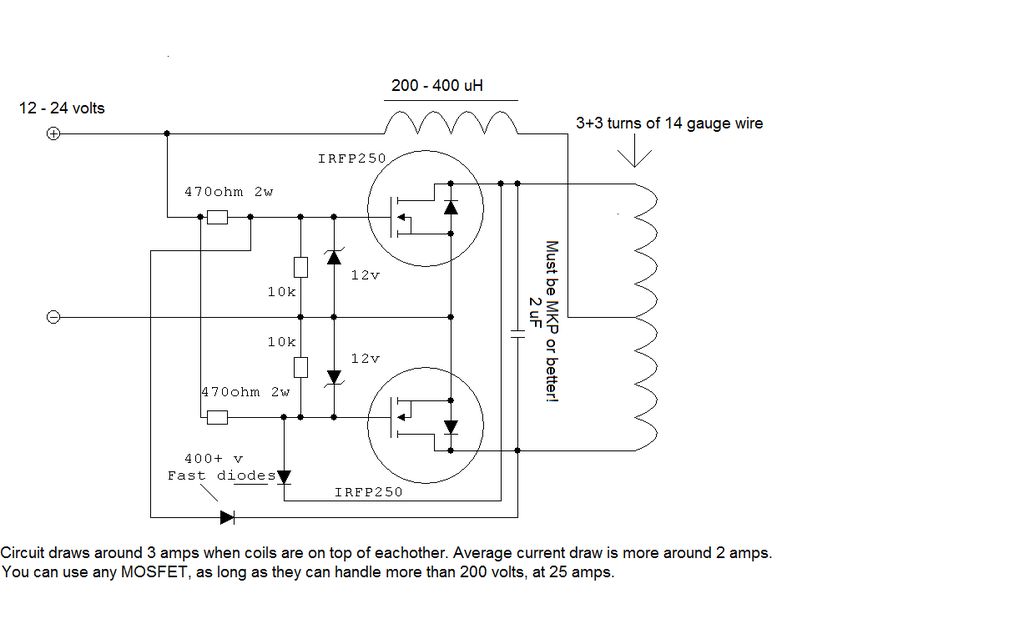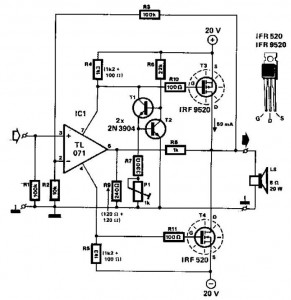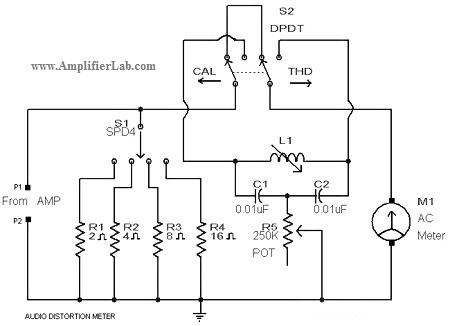
500w power inverter circuit diagram based tip35c
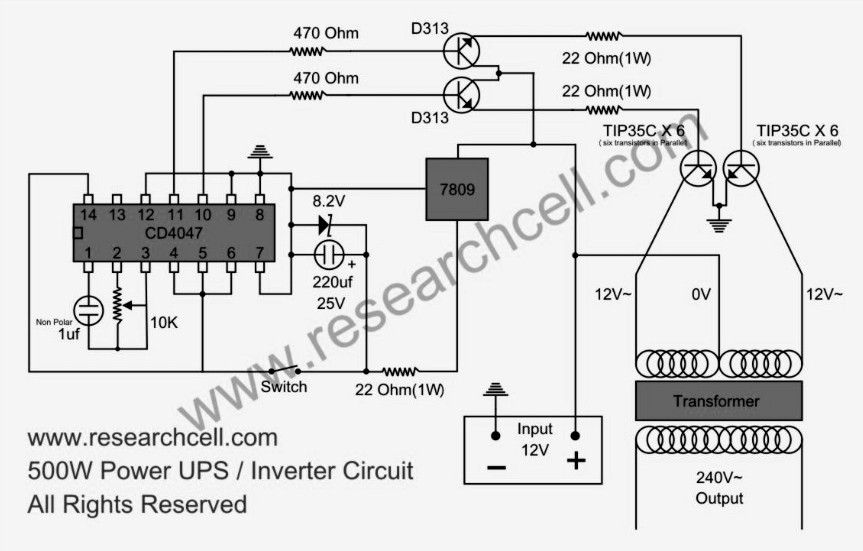
This circuit diagram features a single variable resistor utilized to adjust the frequency of a 240V AC output current. It is advisable to use a frequency meter to modify the frequency from 50Hz to 60Hz according to specific requirements. It is crucial to avoid powering any devices with the inverter before making the frequency adjustment, as an incorrect AC frequency may damage both the equipment and the inverter.
The circuit primarily consists of a variable resistor, which allows for fine-tuning of the output frequency of the inverter. This adjustment is essential for applications that require precise frequency control, such as motors or other AC devices that may operate optimally at different frequencies.
The variable resistor is connected in a manner that influences the timing of the oscillation within the inverter circuit. When the resistance is altered, it changes the charge and discharge times of capacitors in the circuit, thereby affecting the frequency of the output waveform. A frequency meter is recommended for accurate measurement during adjustments, ensuring the output frequency is set to the desired level.
Safety precautions are paramount when operating this inverter circuit. The warning against powering devices before frequency adjustment is critical, as supplying power at an incorrect frequency can lead to overheating and potential failure of both the inverter and connected devices. Proper calibration of the frequency is essential to maintain equipment longevity and reliability.
In summary, this circuit's design emphasizes the importance of precise frequency control through the use of a variable resistor, with additional safety measures to prevent damage during operation.There is certainly only one variable resistance in this circuit diagram which is made use of to adjust frequency of 240V AC output current. It is best to have a frequency meter to adjust this frequency of 50HZ to 60HZ as per your requirement.
Please don`t power up any device using your inverter just before frequency adjustment for the reason that a wrong AC frequency can burn your equipment as well as your inverter.', more= 🔗 External reference
The circuit primarily consists of a variable resistor, which allows for fine-tuning of the output frequency of the inverter. This adjustment is essential for applications that require precise frequency control, such as motors or other AC devices that may operate optimally at different frequencies.
The variable resistor is connected in a manner that influences the timing of the oscillation within the inverter circuit. When the resistance is altered, it changes the charge and discharge times of capacitors in the circuit, thereby affecting the frequency of the output waveform. A frequency meter is recommended for accurate measurement during adjustments, ensuring the output frequency is set to the desired level.
Safety precautions are paramount when operating this inverter circuit. The warning against powering devices before frequency adjustment is critical, as supplying power at an incorrect frequency can lead to overheating and potential failure of both the inverter and connected devices. Proper calibration of the frequency is essential to maintain equipment longevity and reliability.
In summary, this circuit's design emphasizes the importance of precise frequency control through the use of a variable resistor, with additional safety measures to prevent damage during operation.There is certainly only one variable resistance in this circuit diagram which is made use of to adjust frequency of 240V AC output current. It is best to have a frequency meter to adjust this frequency of 50HZ to 60HZ as per your requirement.
Please don`t power up any device using your inverter just before frequency adjustment for the reason that a wrong AC frequency can burn your equipment as well as your inverter.', more= 🔗 External reference
